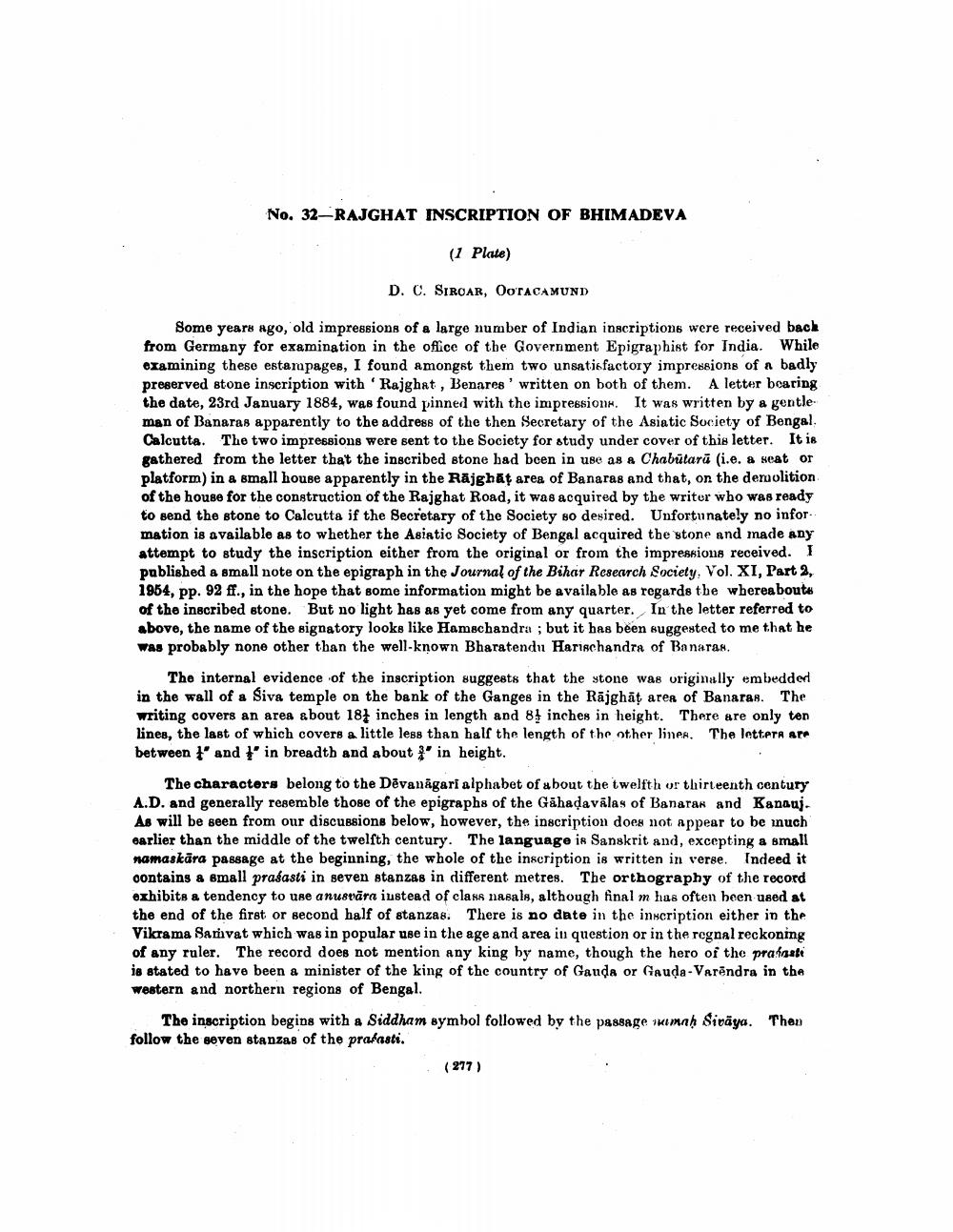________________
No. 32-RAJGHAT INSCRIPTION OF BHIMADEVA
(1 Plate)
D. C. SIROAR, OOTACAMUND
Some years ago, old impressions of a large number of Indian inscriptions were received back from Germany for examination in the office of the Government Epigraphist for India. While examining these estarapages, I found amongst them two unsatisfactory impressions of a badly preserved stone inscription with Rajghat , Benares' written on both of them. A letter bearing the date, 23rd January 1884, was found pinned with the impression. It was written by a gentleman of Banaras apparently to the address of the then Secretary of the Asiatic Society of Bengal Calcutta. The two impressions were sent to the Society for study under cover of this letter. It is gathered from the letter that the inscribed stone had been in use as a Chabūtarā (i.e. a seat or platform) in a small house apparently in the Rājghat area of Banaras and that, on the denuolition of the house for the construction of the Rajghat Road, it was acquired by the writer who was ready to send the stone to Calcutta if the Secretary of the Society so desired. Unfortunately no infor: mation is available as to whether the Asiatic Society of Bengal acquired the stone and made any attempt to study the inscription either from the original or from the impressions received. I published a small note on the epigraph in the Journal of the Bihar Research Society, Vol. XI, Part 2, 1954, pp. 92 ff., in the hope that some information might be available as regards the whereabouts of the inscribed stone. But no light has as yet come from any quarter. In the letter referred to above, the name of the signatory looks like Hamachandra ; but it has been suggested to me that he was probably none other than the well-known Bharatendu Harischandra of Banaras.
The internal evidence of the inscription suggests that the stone was originally embedder in the wall of a Siva temple on the bank of the Ganges in the Rājghāt area of Banaras. The writing covers an area about 187 inches in length and 84 inches in height. There are only ten lines, the last of which covers a little less than half the length of the other lines. The lettera are between t' and ' in breadth and about ' in height.
The characters belong to the Dēvanāgari alphabet of about the twelfth or thirteenth century A.D. and generally resemble those of the epigraphs of the Gahadavālas of Banaran and Kanguj. As will be seen from our discussions below, however, the inscription does not appear to be inuch earlier than the middle of the twelfth century. The language is Sanskrit and, excepting a small namaskāra passage at the beginning, the whole of the inscription is written in verse. Indeed it oontains a small prasasti in seven stanzas in different metres. The orthography of the record exhibits a tendency to use anusvāra iustead of class nasals, although final m has often been used at the end of the first or second half of stanzas. There is no date in the inscription either in the Vikrama Sarivat which was in popular use in the age and area in question or in the regnal reckoning of any ruler. The record does not mention any king by name, though the hero of the praisalt is stated to have been a minister of the king of the country of Gauda or Gauda-Varēndra in the western and northern regions of Bengal.
The inscription begins with a Siddham symbol followed by the passage rumah Sivaya. Then follow the seven stanzas of the prahasti.
(277)




